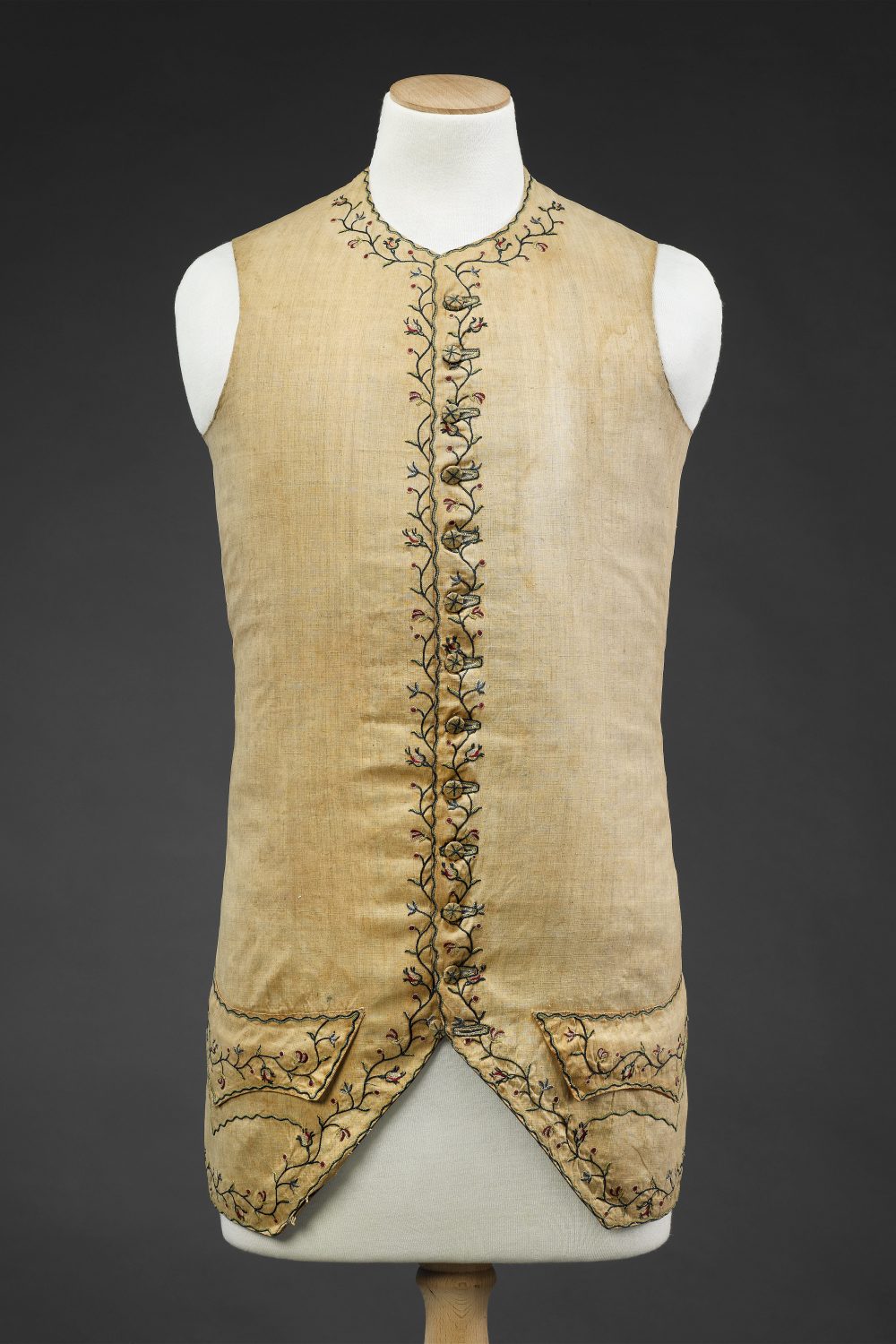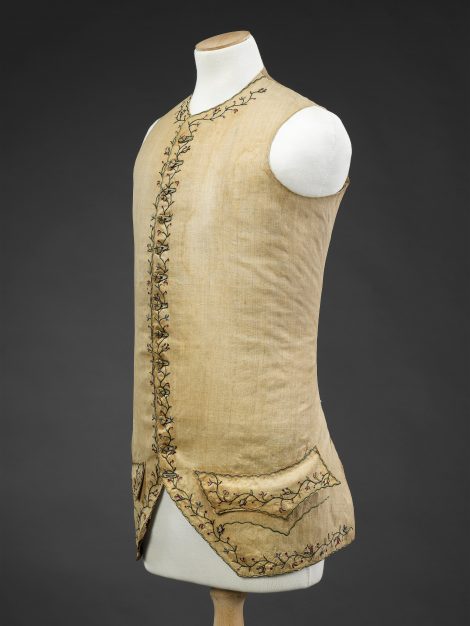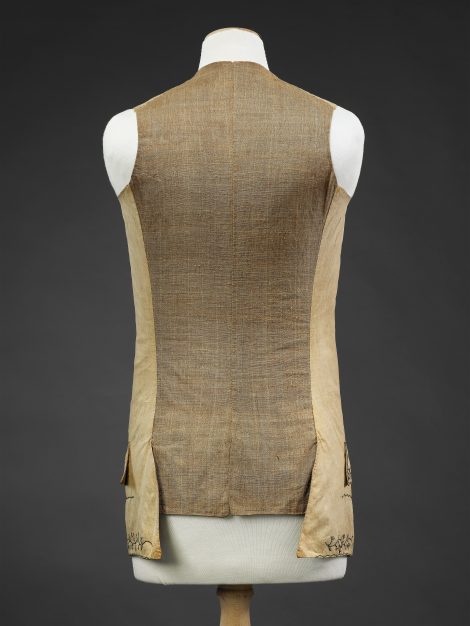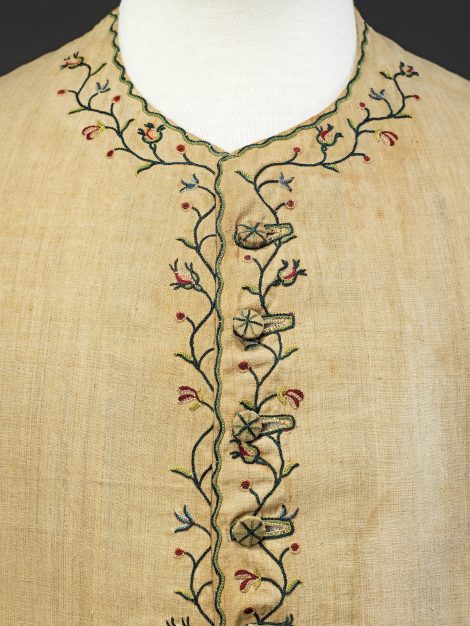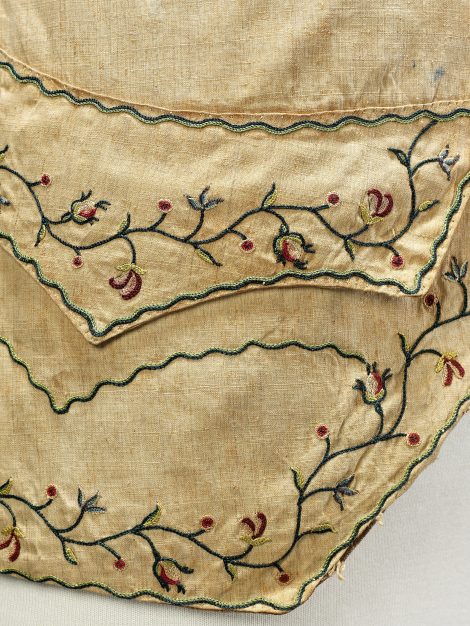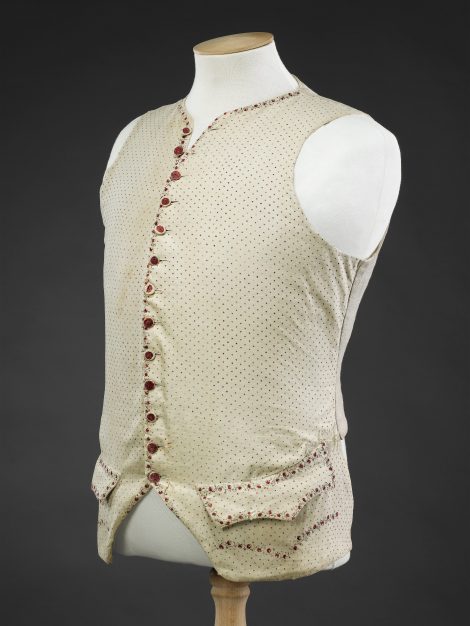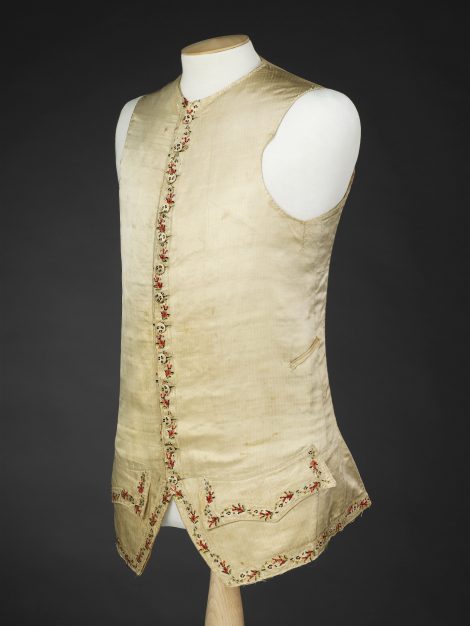Although many 18th Century waistcoats worn by the affluent on formal occasions were magnificently decorated with metallic braids, extensive areas of embroidery, or were made from rich, expensive silks, most were far more restrained, especially as the century progressed. They could be trimmed to match the coat of a suit, or were unrelated to it – appropriate for wear with a number of garments. This trimming tended to be focused upon, or limited to, the borders of the front fastening, the hem and the pocket flaps, and was ready-worked onto the shapes of the waistcoat fronts, together with button roundels, marked out on a length of fabric. Purchased from a mercer, the customer took this length to his tailor to be made up to his measurements. As coats were generally not removed in public, the unseen waistcoat backs were of plainer, less expensive materials such as linen.
This waistcoat, and those seen as Related Items, represent some of the different forms of decoration employed. All date from the 1770s to 1780s, and in comparison to earlier examples have become shorter and cut away diagonally at the base of the front fastening. It is made from unpretentious fawn linen, tamboured with a delicate design of small flowers and berries on meandering stems of foliage. Tambourwork, introduced from India in the mid 18th Century, produced a chain -like stitch on fabric stretched across a frame using a hook. It was also widely used for women’s garments and accessories in graceful patterns and colours.
The brown linen back is nicely shaped and fitted to the body without the need of ties for adjustment, and the body of the waistcoat is lined in a softer cream linen.
